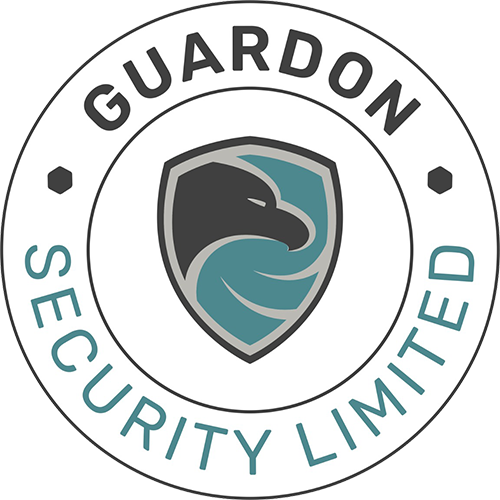- Home
- Risk Assessment and Method Statement
Risk Assessment and Method Statement
Risk Assessment
- Hazard Identified: Slips, trips, and falls due to uneven surfaces, poor weather conditions, or inadequate lighting.
- Risk Level: Medium
- Persons at Risk: Security officers, visitors, contractors.
- Control Measures:
- PPE: High-visibility vests, sturdy footwear with slip-resistant soles.
- Site Walk-Throughs: Conduct pre-patrol checks to identify potential hazards.
- Lighting: Ensure adequate lighting for night patrols.
- Training: Provide training on walking procedures and hazard identification.
- Monitoring & Review:
- Regular supervisor checks.
- Review and update after incidents or operational changes.
Method Statement
- Description: Security officers patrol designated areas to ensure safety and site security.
- Steps to Ensure Safety:
- Conduct pre-patrol site inspections.
- Maintain regular communication with the control room.
- Walk carefully to avoid accidents.
- PPE Required: High-visibility jackets, protective footwear.
- Emergency Procedures:
- Report hazards or accidents immediately.
- Seek medical attention in case of injury.
Risk Assessment
- Hazard Identified: Eye strain, repetitive strain injuries (RSI), and poor workstation ergonomics.
- Risk Level: Medium
- Persons at Risk: CCTV operators, security staff.
- Control Measures:
- Breaks: Enforce regular breaks (5 minutes per hour).
- Ergonomics: Ensure ergonomic seating and screen positioning.
- Training: Educate staff on good posture and screen brightness adjustments.
- Monitoring & Review:
- Regular review of workstation setups.
- Operator feedback sessions.
Method Statement
- Description: CCTV operators monitor screens to detect security threats.
- Steps to Ensure Safety:
- Adjust screen brightness to prevent eye strain.
- Take regular breaks and rotate shifts.
- PPE Required:
- Emergency Procedures:
- Report health issues immediately.
- First aid available at monitoring stations.
Risk Assessment
- Hazard Identified: Dog bites, injury from aggressive behaviour.
- Risk Level: High
- Persons at Risk: Dog handlers, security officers, public.
- Control Measures:
- Training: Handlers must be trained in dog handling and conflict management.
- PPE: Bite-resistant gloves and protective clothing.
- Control: Dogs must be leashed and always harnessed.
- Assessments: Regular behavioural assessments for dogs.
- Monitoring & Review:
- Regular handler evaluations.
- Incident review for improvements.
Method Statement
- Description: Security dogs are used for patrolling and detecting intrusions.
- Steps to Ensure Safety:
- Pre-deployment behavioural assessments.
- Maintain a firm leash grip.
- PPE Required: Bite-resistant gloves, protective clothing.
- Emergency Procedures:
- First aid for dog bites.
- Immediate medical attention if necessary.
Risk Assessment
- Hazard Identified: Aggressive visitors, unauthorized access.
- Risk Level: Medium
- Persons at Risk: Gatehouse officers, visitors.
- Control Measures:
- Access Control: Use ID checks, barriers.
- Communication: Provide two-way radios.
- PPE: High-visibility vests.
- Training: Conflict management, self-defence.
- Monitoring & Review:
- Supervisors to check compliance.
- Routine security audits.
Method Statement
- Description: Officers control site access, verify IDs, and ensure security.
- Steps to Ensure Safety:
- Verify visitor IDs.
- Maintain communication with security teams.
- PPE Required: High-visibility jackets.
- Emergency Procedures:
- De-escalation training.
- Call for backup if necessary.
Risk Assessment
- Hazard Identified: Fire hazards, manual handling injuries, data breaches.
- Risk Level: Medium
- Persons at Risk: Security officers, office staff, visitors.
- Control Measures:
- Fire Safety: Keep exits and alarms accessible.
- Manual Handling: Train in proper lifting techniques.
- Data Security: Enforce data handling policies.
- Monitoring & Review:
- Fire exit checks.
- Regular evacuation drills.
Method Statement
- Description: Security officers ensure a safe office environment.
- Steps to Ensure Safety:
- Check fire extinguishers.
- Monitor access to sensitive areas.
- PPE Required: High-visibility jackets, gloves for manual handling.
- Emergency Procedures:
- Follow fire evacuation protocols.
- Provide first aid as needed.
Risk Assessment
- Hazard Identified: Vandalism, trespassing, structural hazards.
- Risk Level: Medium
- Persons at Risk: Security officers, trespassers, property owners.
- Control Measures:
- Surveillance: CCTV, motion detectors, alarms.
- PPE: Flashlights, two-way radios, protective clothing.
- Site Access: Secure all entry points.
- Monitoring & Review:
- Regular security checks.
- Incident reports and risk re-evaluation.
Method Statement
- Description: Officers patrol abandoned properties to prevent damage and trespassing.
- Steps to Ensure Safety:
- Routine patrols.
- CCTV monitoring.
- PPE Required: Flashlights, steel-toe boots, high-visibility vests.
- Emergency Procedures:
- Report trespassing to authorities.
- Follow incident reporting procedures.
General Safety Measures
- PPE Enforcement: All employees must wear the appropriate PPE.
- Training: Regular health and safety, first aid, and emergency response training.
- Incident Reporting: Implement a clear reporting system.
- Policy Reviews: Conduct regular health and safety policy updates.

